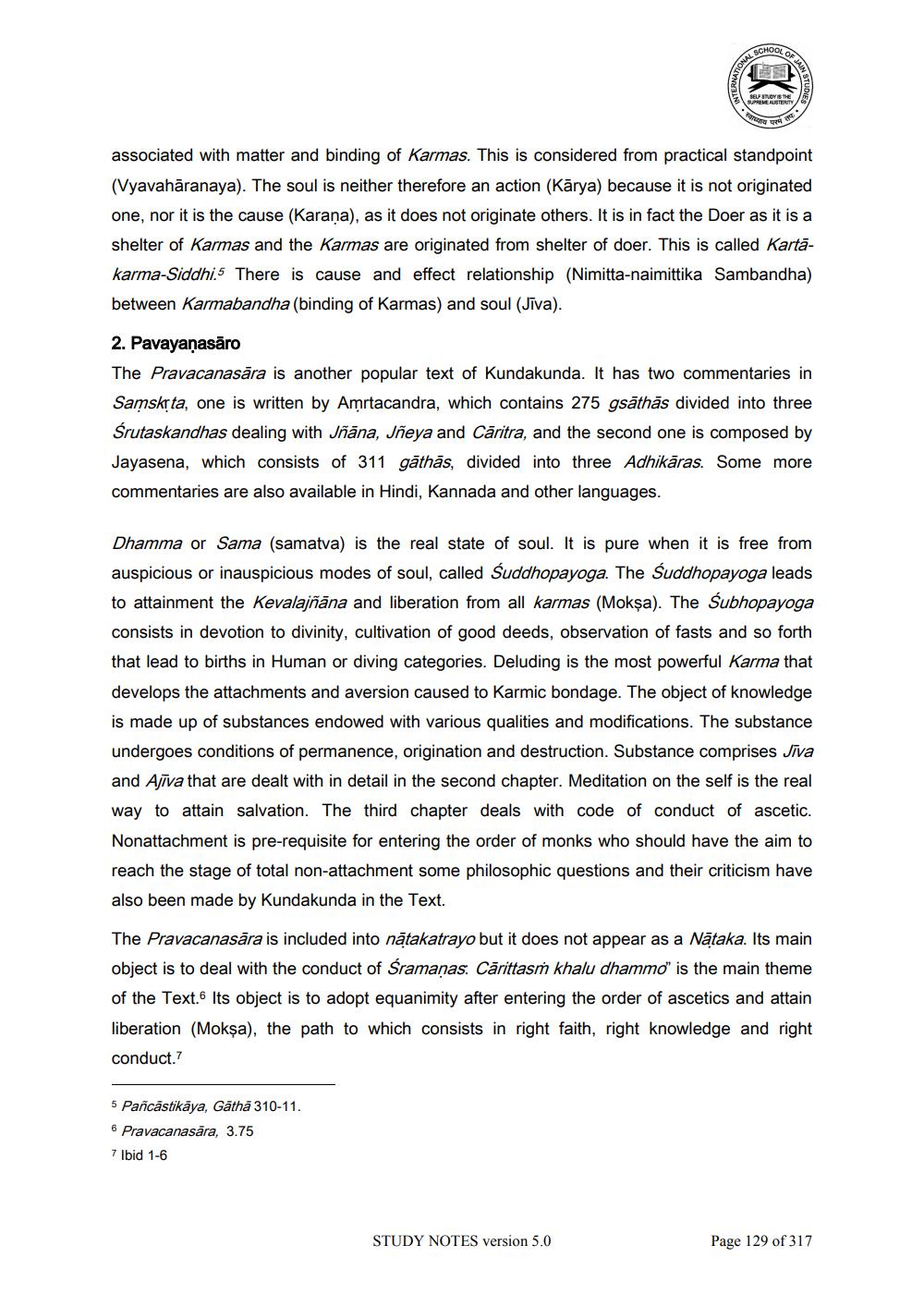________________
associated with matter and binding of Karmas. This is considered from practical standpoint (Vyavahāranaya). The soul is neither therefore an action (Kārya) because it is not originated one, nor it is the cause (Karana), as it does not originate others. It is in fact the Doer as it is a shelter of Karmas and the karmas are originated from shelter of doer. This is called Kartakarma-Siddhi.5 There is cause and effect relationship (Nimitta-naimittika Sambandha) between Karmabandha (binding of Karmas) and soul (Jiva).
2. Pavayanasāro The Pravacanasāra is another popular text of Kundakunda. It has two commentaries in Samskrta, one is written by Amrtacandra, which contains 275 gsāthās divided into three Śrutaskandhas dealing with Jñāna, Jñeya and Caritra, and the second one is composed by Jayasena, which consists of 311 gāthās, divided into three Adhikāras. Some more commentaries are also available in Hindi, Kannada and other languages.
Dhamma or Sama (samatva) is the real state of soul. It is pure when it is free from auspicious or inauspicious modes of soul, called Suddhopayoga. The Suddhopayoga leads to attainment the Kevalajñāna and liberation from all karmas (Mokşa). The śubhopayoga consists in devotion to divinity, cultivation of good deeds, observation of fasts and so forth that lead to births in Human or diving categories. Deluding is the most powerful Karma that develops the attachments and aversion caused to Karmic bondage. The object of knowledge is made up of substances endowed with various qualities and modifications. The substance undergoes conditions of permanence, origination and destruction. Substance comprises Jiva and Ajīva that are dealt with in detail in the second chapter. Meditation on the self is the real way to attain salvation. The third chapter deals with code of conduct of ascetic. Nonattachment is pre-requisite for entering the order of monks who should have the aim to reach the stage of total non-attachment some philosophic questions and their criticism have also been made by Kundakunda in the Text.
The Pravacanasāra is included into natakatrayo but it does not appear as a Nataka. Its main object is to deal with the conduct of Sramaņas. Cārittasṁ khalu dhammo" is the main theme of the Text. Its object is to adopt equanimity after entering the order of ascetics and attain liberation (Mokşa), the path to which consists in right faith, right knowledge and right conduct.?
5 Pañcastikāya, Gātha 310-11. 6 Pravacanasāra, 3.75 7 Ibid 1-6
STUDY NOTES version 5.0
Page 129 of 317




